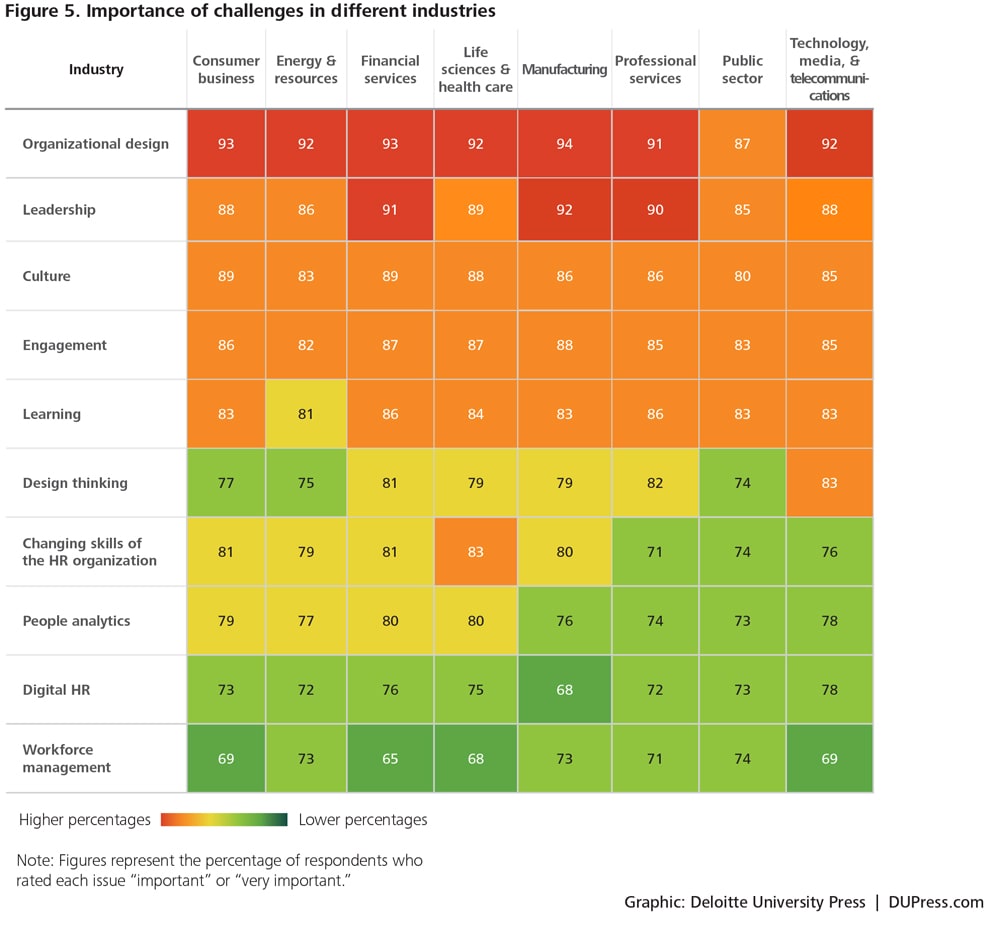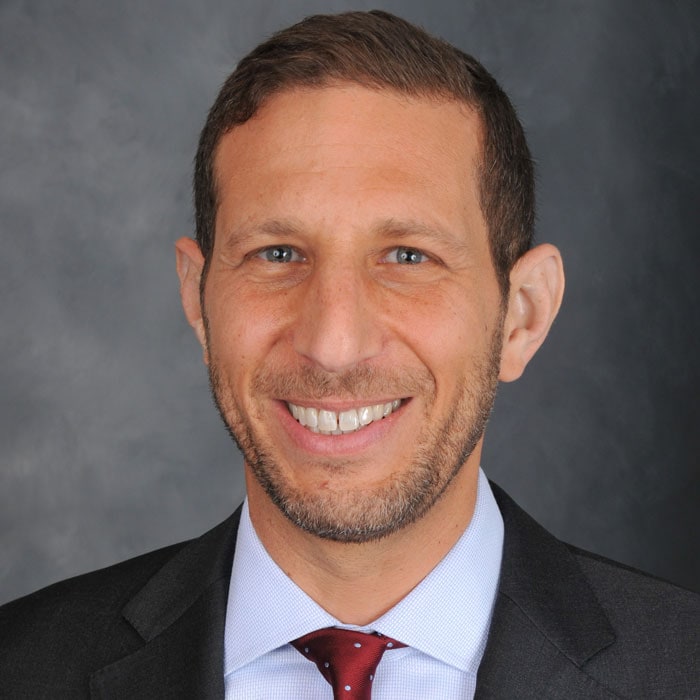Introduction—The new organization has been saved

Introduction—The new organization Different by design
01 March 2016
Four powerful forces are driving change for both HR functions and the organizations they serve, creating talent challenges—as well as potential solutions—radically different from those faced by previous generations of leaders.
View the complete Global Human Capital Trends 2016 report

Sweeping global forces are reshaping the workplace, the workforce, and work itself. To help organizations and their leaders understand these changes, Deloitte presents the 2016 Global Human Capital Trends report, based on more than 7,000 responses to our survey in over 130 countries around the world.
The theme of this year’s report—“The new organization: Different by design”—reflects a major finding: After three years of struggling to drive employee engagement and retention, improve leadership, and build a meaningful culture, executives see a need to redesign the organization itself, with 92 percent of survey participants rating this as a critical priority. The “new organization,” as we call it, is built around highly empowered teams, driven by a new model of management, and led by a breed of younger, more globally diverse leaders.
Explore
View 2016 Global Human Capital Trends
Create and download a custom PDF
Watch the related video
Explore the related infographic
To lead this shift toward the new organization, CEOs and HR leaders are focused on understanding and creating a shared culture, designing a work environment that engages people, and constructing a new model of leadership and career development. In competition for skilled people, organizations are vying for top talent in a highly transparent job market and becoming laser-focused on their external employment brand. Executives are embracing digital technologies to reinvent the workplace, focusing on diversity and inclusion as a business strategy, and realizing that, without a strong learning culture, they will not succeed.
After three years of struggling to drive employee engagement and retention, improve leadership, and build a meaningful culture, executives see a need to redesign the organization.
Amidst these changes, the HR function is taking on a new role as the steward and designer of these new people processes. The mission of the HR leader is evolving from that of “chief talent executive” to “chief employee experience officer.” HR is being asked to simplify its processes, help employees manage the flood of information at work, and build a culture of collaboration, empowerment, and innovation. This means that HR is redesigning almost everything it does—from recruiting to performance management to onboarding to rewards systems. To do this, our research suggests that HR must upgrade its skills to include the areas of design thinking, people analytics, and behavioral economics.
The forces of global change
What are the forces driving this demand to reorganize and redesign institutions around the world? We see a series of drivers coming together to create disruptive change in the talent landscape:
First, demographic upheavals have made the workforce both younger and older, as well as more diverse. Millennials now make up more than half the workforce, and they bring high expectations for a rewarding, purposeful work experience, constant learning and development opportunities, and dynamic career progression. At the same time, Baby Boomers working into their 70s and 80s are being challenged to adapt to new roles as mentors, coaches, and often subordinates to junior colleagues. Also, the global nature of business has made the workforce more diverse, demanding a focus on inclusion and shared beliefs to tie people together.
Second, digital technology is now everywhere, disrupting business models and radically changing the workplace and the way work is done. Technologies such as mobile devices, 3D printing, sensors, cognitive computing, and the Internet of Things are changing the way companies design, manufacture, and deliver almost every product and service, while digital disruption and social networking have changed the way organizations hire, manage, and support people. Innovative companies are figuring out how to simplify and improve the work experience by applying the disciplines of design thinking and behavioral economics, embracing a new approach that we call “digital HR.”
We see a series of drivers coming together to create disruptive change in the talent landscape.
Third, the rate of change has accelerated. Fifty years of operating under Moore’s Law—the axiom that computing power doubles every two years—have not only propelled technology innovation forward but also significantly increased the pace of change in business as a whole, requiring organizations to be more agile. Rapid business-model innovation from companies such as Uber and Airbnb is forcing organizations to respond and reposition themselves quickly to meet new challenges. In our highly connected, fast-changing world, “black swan” events (those of low probability and high impact) also seem to be more significant, reinforcing the need for agility.
Fourth, a new social contract is developing between companies and workers, driving major changes in the employer-employee relationship. The days when a majority of workers could expect to spend a career moving up the ladder at one company are over. Young people anticipate working for many employers and demand an enriching experience at every stage. This leads to expectations for rapid career growth, a compelling and flexible workplace, and a sense of mission and purpose at work. Today, contingent, contract, and part-time workers make up almost one-third of the workforce,1 yet many companies lack the HR practices, culture, or leadership support to manage this new workforce.
Our global research
Now in its fourth year, Deloitte’s 2016 Global Human Capital Trends report is one of the largest longitudinal studies of talent, leadership, and HR challenges and readiness around the world. The research described in this report involved surveys and interviews with more than 7,000 business and HR leaders from 130 countries. (See the appendix to this chapter for details on survey demographics.) The survey asked business and HR respondents to assess the importance of specific talent challenges facing their organization.
The top 10 human capital trends for 2016

In 2016, organizational design rocketed to the top of the agenda among senior executives and HR leaders worldwide, with 92 percent rating it a key priority. Perennial issues such as leadership, learning, and HR skills continue to rank high in importance, as they have in each of the four years of this annual study. Yet this year, a key shift is under way, as corporate leaders turn a more focused eye toward adapting their organization’s design to compete successfully in today’s highly challenging business environment and competitive talent market.
Culture and engagement are also a major concern for the C-suite. This reflects, in part, the rise of social networking tools and apps that leave companies more transparent than ever, whether they like it or not. Top executives increasingly recognize the need for a conscious strategy to shape their corporate culture, rather than having it defined for them through Glassdoor or Facebook.
Figure 2 presents this year’s trends ranked in order of their importance as rated by survey respondents.

Organizational design: The rise of teams
As companies strive to become more agile and customer-focused, organizations are shifting their structures from traditional, functional models toward interconnected, flexible teams. More than nine out of ten executives surveyed (92 percent) rate organizational design as a top priority, and nearly half (45 percent) report their companies are either in the middle of a restructuring (39 percent) or planning one (6 percent).
A new organizational model is on the rise: a “network of teams” in which companies build and empower teams to work on specific business projects and challenges. These networks are aligned and coordinated with operations and information centers similar to command centers in the military. Indeed, in some ways, businesses are becoming more like Hollywood movie production teams and less like traditional corporations, with people coming together to tackle projects, then disbanding and moving on to new assignments once the project is complete.
This new structure has sweeping implications, forcing programs such as leadership development, performance management, learning, and career progression to adapt. Challenges still remain: Only 14 percent of executives believe their companies are ready to effectively redesign their organizations; just 21 percent feel expert at building cross-functional teams, and only 12 percent understand the way their people work together in networks.
Leadership awakened: Generations, teams, science
Fully 89 percent of executives in this year’s survey rated the need to strengthen, reengineer, and improve organizational leadership as an important priority. The traditional pyramid-shaped leadership development model is simply not producing leaders fast enough to keep up with the demands of business and the pace of change.
More than half of surveyed executives (56 percent) report their companies are not ready to meet leadership needs. Only 7 percent state that their companies have accelerated leadership programs for Millennials, although 44 percent report making progress—a jump from 33 percent last year. While investment in leadership development has grown by 10 percent since 2015, progress has been uneven. In fact, more than one in five companies (21 percent) have no leadership programs at all.2
Our findings suggest that organizations need to raise the bar in terms of rigor, evidence, and more structured and scientific approaches to identifying, assessing, and developing leaders, and that this process needs to start earlier in leaders’ careers. This is likely to also involve teaching senior leaders to take on new roles to make way for younger leaders.
Shape culture: Drive strategy
Last year, “culture and engagement” ranked as the most important issue overall. This year, we asked executives about culture and engagement separately—and both placed near the top of the importance list, with 86 percent citing culture as an important or very important issue.
Why the separate rankings? Both are critical human capital issues today, and each requires a CEO-level commitment and strong support from HR if they are to be understood, measured, and improved. However, they are different concepts and need a different focus and set of solutions. Culture describes “the way things work around here,” while engagement describes “how people feel about the way things work around here.”
Culture describes “the way things work around here,” while engagement describes “how people feel about the way things work around here.”
That said, culture and engagement are also linked. When a company’s culture is aligned with its values, it attracts those who feel comfortable in that culture, which in turn helps companies to motivate people, leading to a high level of engagement (see figure 3).

In this year’s survey, the percentage of executives who believe their companies are driving the “right culture” rose from 10 percent to 12 percent—a small sign of progress. Yet fewer than one in three executives (28 percent) report that they understand their organization’s culture.
Engagement: Always on
Employee engagement is a headline issue throughout business and HR. An overwhelming majority of executives in this year’s survey (85 percent) ranked engagement as a top priority (that is, important or very important).
Building a compelling and meaningful work environment is a complex process.3 At the same time, the world of employee engagement and feedback is exploding. Annual engagement surveys are being replaced by “employee listening” tools such as pulse surveys, anonymous social tools, and regular feedback check-ins by managers. All these new approaches and tools have given rise to the “employee listening” officer, an important new role for HR.
In terms of readiness, companies are making progress. The percentage of executives who believe their organizations are “very ready” to deal with engagement issues increased from 10 percent in 2015 to 12 percent in 2016, while those who feel they are “fully ready” rose from 31 percent to 34 percent. These are hopeful signs, but even with this increase, only 46 percent of companies report that they are prepared to tackle the engagement challenge.
Learning: Employees take charge
This year, 84 percent of executives rated learning as important or very important. This focus on learning seems appropriate, as learning opportunities are among the largest drivers of employee engagement and strong workplace culture—they are part of the entire employee value proposition, not merely a way to build skills.
Compared to last year, companies appear to be making strides in adopting new technologies and embracing new learning models. The percentage of companies that feel comfortable incorporating massive open online courses (MOOCs) into their learning platforms rose to 43 percent from 30 percent last year, while the percentage who said the same about advanced video tripled from 5 percent to 15 percent.
These gains signal increasing recognition among executives and HR leaders that learning must adapt to a world where employees demand continuous learning opportunities through innovative platforms tailored to their individual schedules. A new type of employee learning is emerging that is more “consumer-like” and that brings together design thinking, content curation, and an integrated model offering an end-to-end designed learning experience. However, companies still face tremendous challenges in realizing this vision. Even as spending on learning rose 10 percent last year (to over $140 billion),4 only 37 percent of companies believe their programs are effective, and only 30 percent believe corporate learning is the center of learning today.5
Design thinking: Crafting the employee experience
Design thinking is emerging as a major new trend in HR. Global Human Capital Trends highlighted the first inklings of this issue two years ago when we identified the “overwhelmed employee” as a significant talent concern, with employees struggling to deal with a flood of emails and information, grappling with demanding work assignments and being on 24/7. Last year’s Global Human Capital Trends report identified HR’s attempts to “simplify” the work environment as a response to the overwhelmed employee situation.
Now, innovative HR organizations are taking their efforts a step further by incorporating design thinking into their approach to managing, supporting, and training people. Instead of building “programs” and “processes,” leading HR organizations are studying people to help develop interventions, apps, and tools that help make employees less stressed and more productive.
In this year’s survey, 79 percent of executives rank design thinking as a high priority when it comes to meeting talent challenges. While only 12 percent of respondents overall believe that design thinking is prevalent in their current talent programs, 50 percent of those executives who rate their talent programs as excellent state that they apply design thinking well, and self-identified high-performing companies are three to four times more likely than their competitors to be applying design thinking to their people practices. Clearly, design thinking is emerging as a best practice for leading companies and innovative HR organizations.
HR: Growing momentum toward a new mandate
Many HR organizations appear to be “getting it” when it comes to upgrading the skills, capabilities, and experience of their teams. Compared to last year, the percentage of executives who rank HR skills as a top priority fell slightly. More than two-thirds of executives in this year’s survey (68 percent) report their companies have solid development programs for HR professionals, and 60 percent believe they are holding HR accountable for talent and business results—both a higher proportion than a year ago.
Best of all, HR organizations’ scorecard shows a marked and steady improvement. Four out of ten executives report their companies are ready to address the skills gaps in HR—an increase of 30 percent over 2015. And the percentage of executives who rate their HR organizations as “good or excellent” in delivering business-relevant talent solutions increased as well.
For the first time in the four years of the Global Human Capital Trends report, there are real signs of change and progress: HR teams are learning to experiment with new ideas; they are making significant steps to upgrade skills; and a new generation of younger, more business-savvy and technology-empowered people is entering the profession.
People analytics: Gaining speed
As technology makes data-driven HR decision making a possibility, 77 percent of executives now rate people analytics as a key priority, up slightly from last year. In response, companies are building people analytics teams, rapidly replacing legacy systems, and combining separate analytics groups within HR into one strategic function. In 2016, 51 percent of companies are now correlating business impact to HR programs, up from 38 percent in 2015. Forty-four percent are now using workforce data to predict business performance, up from 29 percent last year.
Companies are entering a “golden age” of people analytics—and progress could accelerate.
One of the biggest new trends in people analytics is also starting to accelerate: leveraging external data—such as data from social networking platforms, employment brand data, data on hiring patterns, and external turnover and demographic data—to predict workforce trends and target top talent. Today, 29 percent of companies believe they are performing well in this area, and 8 percent rate themselves excellent.
A variety of new tools and data sources have entered this domain. Employee feedback and engagement systems, real-time narrative analysis, and off-the-shelf predictive models from almost every talent management vendor are now available. Companies are entering a “golden age” of people analytics—and progress could accelerate.
Digital HR: Revolution, not evolution
The all-digital world is changing how we live and work, creating two major challenges. First, how will HR help business leaders and employees shift to a “digital mind-set”—a digital way of managing, organizing, and leading change? Second, how will HR itself revolutionize HR processes, systems, and organizations to adopt new digital platforms, apps, and ways of delivering HR services?
This year’s chapter on digital HR focuses on the second part of the challenge: how to reimagine HR and the employee experience in a digital world. Innovative HR organizations are integrating mobile and cloud technologies to build an app-based set of services designed to incorporate HR programs into an employee’s daily life. More than simply replacing old HR systems, digital HR means creating an entire platform of services built around ease of use. By bringing together design thinking and mobile technology, companies can now develop their own custom apps to make work easier, more productive, and more enjoyable.
This year, 74 percent of executives identified digital HR as a top priority, and it will likely be a major focus in 2016. The trend is moving rapidly: 42 percent of companies are adapting their existing HR systems for mobile, device-delivered, just-in-time learning; 59 percent are developing mobile apps that integrate back-office systems for ease of use by employees; and 51 percent are leveraging external social networks in their own internal apps for recruitment and employee profile management.
The gig economy: Distraction or disruption?
When it comes to meeting heightened talent needs, top HR organizations must increasingly learn to integrate and leverage the part-time and contingent workforce. More than seven out of ten executives and HR leaders (71 percent) ranked the trend as important or very important.
Operating effectively in the gig economy poses a number of questions. How can companies best use and schedule external staff to improve the productivity of their own workers and increase profitability? How can companies leverage contingent workers to access some of the most talented and highly skilled people in the workforce?
Many companies are struggling with the challenge. Only 19 percent of executives surveyed believe their companies fully understand the labor laws that govern contingent workers, and only 11 percent have complete management processes for the contingent part of the workforce. This suggests that companies need to take a more deliberate approach as the size and scope of the contingent workforce continues to grow in the coming years. Workforce management will also have to address the tremendous growth in cognitive computing and other smart technologies that are likely to eliminate jobs, create new jobs, change the nature of work, and disrupt the workforce.
A year of change and disruption
Taken together, the 2016 Global Human Capital Trends report sketches out a vast and varied series of changes and challenges. As the pace of change accelerates, business and HR leaders who move aggressively to address these trends will likely gain an advantage over their competitors and find themselves on the winning side in the global competition for talent.
Appendix
Selected data from this year’s survey can be viewed by geography, company size, and industry using an interactive tool, the Human Capital Trends Dashboard. This tool, available at http://www.deloitte.com/hcdashboard, lets you explore the data visually to see how talent priorities vary around the world.
This year’s survey results showed remarkable consistency across geographies.

As with global regions, survey results were also similar across different industries, suggesting broad agreement on key trend priorities.


Deloitte’s Human Capital professionals leverage research, analytics, and industry insights to help design and execute the HR, talent, leadership, organization, and change programs that enable business performance through people performance. Visit the “Human Capital” area of www.deloitte.com to learn more.
© 2021. See Terms of Use for more information.






